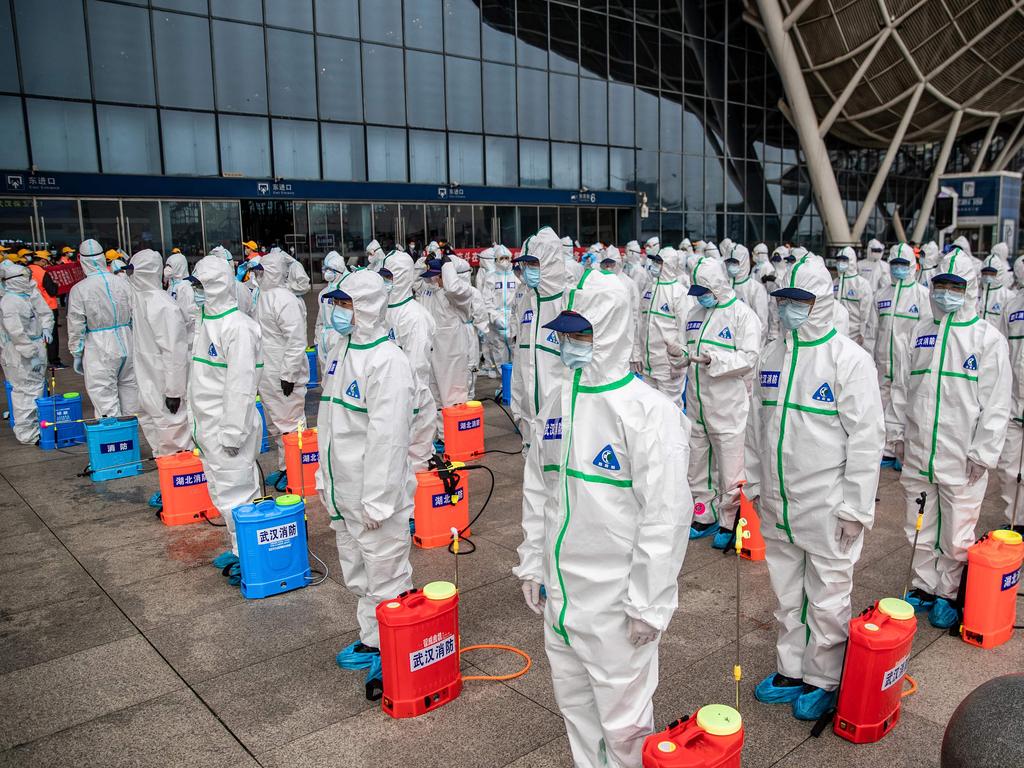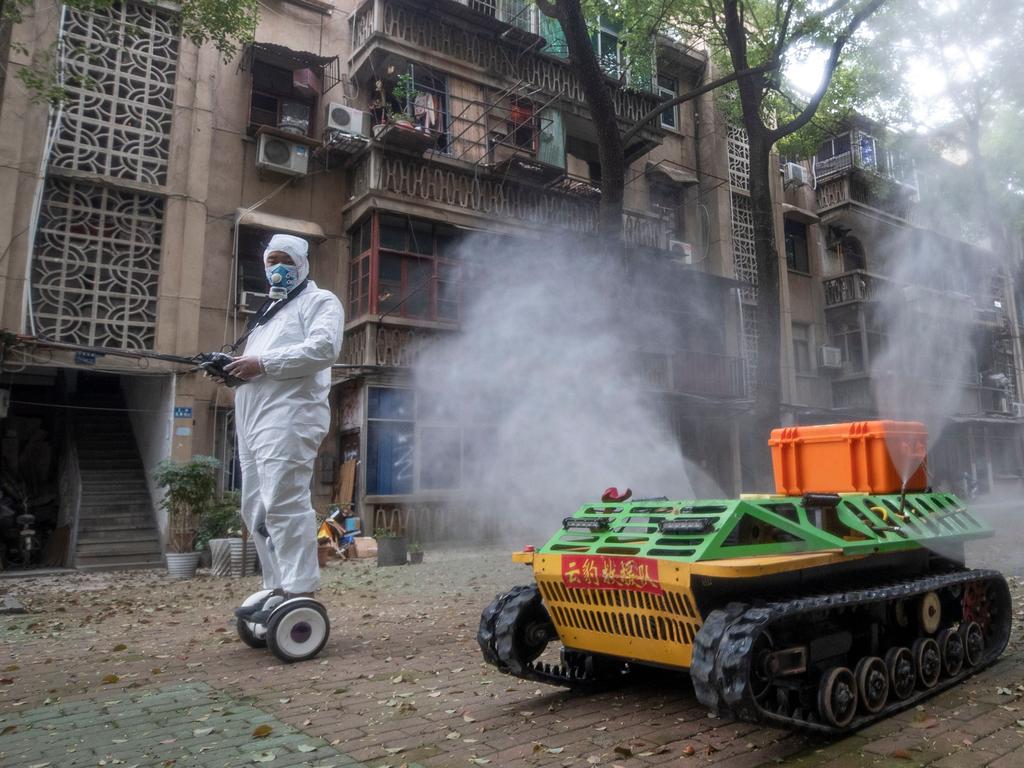Coronavirus: Fatal mistake that saw virus spread
Stop the flights. Stop the boats. Close the borders. Why didn’t all this stop COVID-19 infecting the world? And will our lockdowns hold it back?
ANALYSIS
Stop the flights. Stop the boats. Close the borders. Why didn’t all this stop COVID-19 infecting the world?
COVID-19 has two traits that made containment next to impossible. It takes up to two weeks between being infected and for symptoms to develop. And, during part of that time, unknowing sufferers can be unwitting spreaders.
Some estimates put that figure at one in three of all cases.
This threw a spanner in the works from the outset.
From the point the first cases of a strange new pneumonia was discovered emanating from a fish market in Wuhan, China, the virus had already spread.
By the time 100 were being treated for an acute respiratory syndrome in Chinese hospitals, there was likely already thousands of carriers in the general community.
Some would have thought they had a dose of the flu. Others barely noticed any symptoms at all.
But each of them was infecting three others.
Making matters worse, Wuhan, like most modern cities, was a major transport hub.
It was well connected to the rest of China by extensive rail and road networks. Its international airport could carry passengers anywhere in the world in 36 hours.
And everyone was getting ready to visit friends and family for the Chinese Lunar New Year holiday. According to then mayor of Wuhan Zhou Xianwang, some five million people left the city during January before the lockdown was imposed.
It was a perfect scenario for a highly contagious, largely invisible virus, to spread.
But Beijing’s response made it worse. Much worse.
RELATED: Follow the latest coronavirus updates
RELATED: National tally: Coronavirus cases in Australia

SECRECY
It’s hard to comprehend now, but the Chinese government assured the World Health Organisation in mid-January that this strange new disease was not being transmitted human-to-human.
Meanwhile, Beijing was busily suppressing information. Doctors discussing the subject were gagged or detained. Whistleblowers were suppressed. State-controlled media was both censored and instructed to repeat the party line.
Preliminary investigations conducted by the Chinese authorities have found no clear evidence of human-to-human transmission of the novel #coronavirus (2019-nCoV) identified in #Wuhan, #China🇨🇳. pic.twitter.com/Fnl5P877VG
— World Health Organization (WHO) (@WHO) January 14, 2020
This allowed the virus to advance, unchecked, in the crucial days and weeks of the outbreak.
If Beijing had reacted to the outbreak as a public health emergency, instead of a potential public relations embarrassment, the world could very well be in a very different place right now.
“The Chinese Communist Party’s proclivity for secrecy was reinforced by President Xi Jinping’s eagerness to be perceived as an in-control strongman, backed by a fortified CCP (Chinese Communist Party),” writes ASPI analyst Brahma Chellaney.
But, by January 21, Beijing changed its tune. The outbreak was obvious. No amount of surveillance-state censorship could hide that. Two days later – seven weeks after the virus was first detected – it moved to lock Wuhan down.
“China has a history of mishandling outbreaks, including SARS in 2002 and 2003,” writes international affairs think-tank Brookings Institution analyst Shadi Hamid. “But Chinese leaders’ negligence in December and January — for well over a month after the first outbreak in Wuhan — far surpasses those bungled responses. This is what allowed the virus to spread across the globe.”
Now, Beijing is attempting to rewrite history. It’s attempting to pin the blame for the virus’ origins on the United States itself.
RELATED: What is social distancing?
RELATED: Six coronavirus facts experts want you to know

ONE STEP AHEAD
The five million people that had travelled out of Wuhan in January seeded the virus across China. New outbreaks soon flared, despite the city having been locked down.
Thousands had also flown out of the city to destinations around the world.
According to a statistical analysis by the New York Times, 900 travelled to New York City in January. Some 2200 went to Sydney.
Even once the world was alerted in late January, COVID-19 was slipping past defences.
As carriers took up to 14 days to present symptoms, airport temperature tests were only partially effective. Some estimates put up to 85 per cent of cases passed through undetected.
These then went on to seed new breakouts at their destinations.
RELATED: How ‘flattening the curve’ saves lives
RELATED: Should you stop taking public transport?

Travel restrictions and bans were enacted once governments realised what was happening.
But this was shutting the stable door after the viral horse had bolted.
Besides, not all carriers were coming from Wuhan: many had unknowingly been exposed elsewhere in China. Or Italy. Or Iran. Or South Korea.
It took a month, but by March it was obvious a worldwide pandemic was unfolding.
Clusters were springing up everywhere.
Now, the only effect international travel bans would have is to slow the virus’ spread, for a little while.
LOCKDOWNS NOT ENOUGH
Countries can’t simply rely on locking down their populations to defeat COVID-19, warns the World Health Organisation’s pandemic response expert Mike Ryan.
“What we really need to focus on is finding those who are sick, those who have the virus, and isolate them, find their contacts and isolate them,” Ryan told the BBC on Sunday night.
Social distancing and isolation measures may slow the spread. But it leaves a large pool of people vulnerable to catching the disease.
“The danger right now with the lockdowns … if we don’t put in place the strong public health measures now, when those movement restrictions and lockdowns are lifted, the danger is the disease will jump back up,” he says. “Once we’ve suppressed the transmission, we have to go after the virus. We have to take the fight to the virus.”
Ryan warned that, while several vaccines were in development, people had to be “realistic” about their availability.
“We have to make sure that it’s absolutely safe … we are talking at least a year,” he said.
“The vaccines will come, but we need to get out and do what we need to do now.”
Jamie Seidel is a freelance writer | @JamieSeidel




